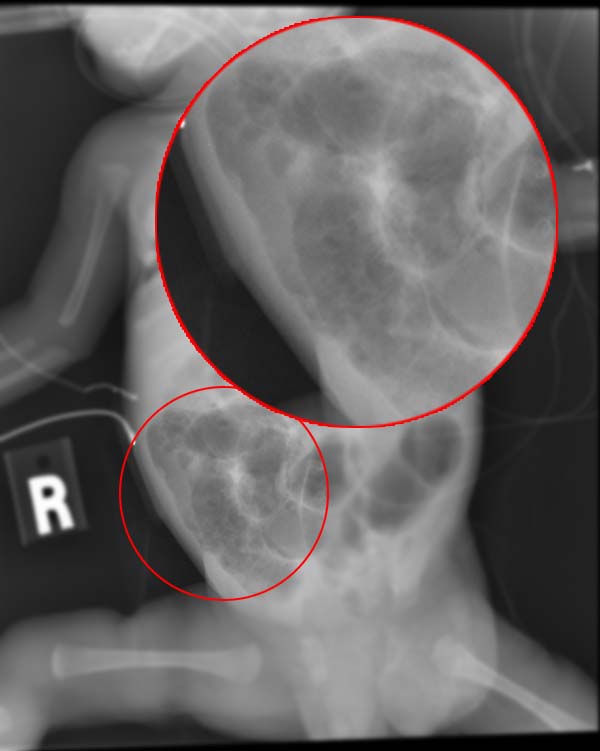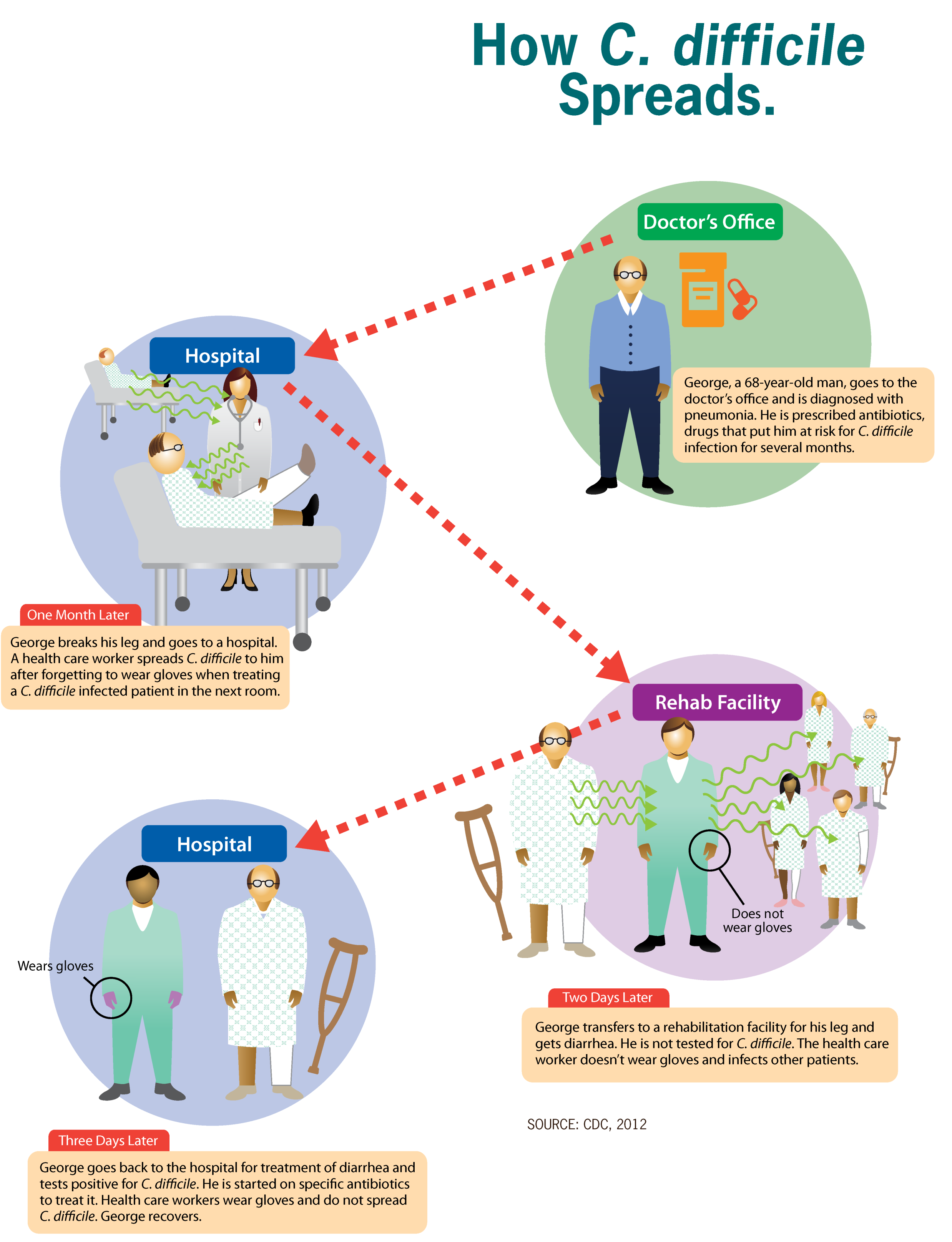|
Enterocolitis
Enterocolitis is an inflammation of the digestive tract, involving enteritis of the small intestine and colitis of the colon. It may be caused by various infections, with bacteria, viruses, fungi, parasites, or other causes. Common clinical manifestations of enterocolitis are frequent diarrheal defecations, with or without nausea, vomiting, abdominal pain, fever, chills, and alteration of general condition. General manifestations are given by the dissemination of the infectious agent or its toxins throughout the body, or – most frequently – by significant losses of water and minerals, the consequence of diarrhea and vomiting. Signs and symptoms Symptoms of enterocolitis include abdominal pain, diarrhea, nausea, vomiting, fever, and loss of appetite. Cause Among the causal agents of acute enterocolitis are: * bacteria: ''Salmonella'', ''Shigella'', ''Escherichia coli (E. coli)'', '' Campylobacter'' etc. * viruses: enteroviruses, rotaviruses, norovirus, adenoviruses * fungi ... [...More Info...] [...Related Items...] OR: [Wikipedia] [Google] [Baidu] |
Necrotizing Enterocolitis
Necrotizing enterocolitis (NEC) is an intestinal disease that affects premature or very low birth weight infants. Symptoms may include poor feeding, bloating, decreased activity, blood in the stool, vomiting of bile, multi-organ failure, and potentially death. The exact cause is unclear. However, several risk factors have been identified. Consistently described risk factors include formula feeding, intestinal dysbiosis, low birth weight, and prematurity. Other risk factors potentially implicated include congenital heart disease, birth asphyxia, exchange transfusion, and prelabor rupture of membranes. The underlying mechanism is believed to involve a combination of poor blood flow and infection of the intestines. Diagnosis is based on symptoms and confirmed with medical imaging. Maternal factors such as chorioamnionitis, cocaine abuse, intrauterine growth restriction, intrahepatic cholestasis during pregnancy, increased body mass index, lack of prenatal steroids, m ... [...More Info...] [...Related Items...] OR: [Wikipedia] [Google] [Baidu] |
Enteritis
Enteritis is inflammation of the small intestine. It is most commonly caused by food or drink contaminated with pathogenic microbes,Dugdale, David C., IIII, and George F Longretc"Enteritis" MedlinePlus Medical Encyclopedia, 18 October 2008. Accessed 24 August 2009. such as ''Serratia'', but may have other causes such as NSAIDs, radiation therapy as well as autoimmune conditions like coeliac disease. Symptoms may include abdominal pain, cramping, diarrhoea, dehydration, and fever. Related diseases of the gastrointestinal (GI) system (including gastritis, gastroenteritis, colitis, and enterocolitis) may involve inflammation of the stomach and large intestine. Duodenitis, jejunitis, and ileitis are subtypes of enteritis which are localised to a specific part of the small intestine. Inflammation of both the stomach and small intestine is referred to as gastroenteritis. Signs and symptoms Signs and symptoms of enteritis are highly variable and vary based on the specific cause ... [...More Info...] [...Related Items...] OR: [Wikipedia] [Google] [Baidu] |
Gastroenteritis
Gastroenteritis, also known as infectious diarrhea, is an inflammation of the Human gastrointestinal tract, gastrointestinal tract including the stomach and intestine. Symptoms may include diarrhea, vomiting, and abdominal pain. Fever, lack of energy, and dehydration may also occur. This typically lasts less than two weeks. Although it is not related to influenza, in the U.S it is sometimes called the "stomach flu". Gastroenteritis is usually caused by viruses; however, gut bacteria, parasites, and fungus, fungi can also cause gastroenteritis. In children, rotavirus is the most common cause of severe disease. In adults, norovirus and ''Campylobacter'' are common causes. Eating improperly prepared food, drinking contaminated water or close contact with a person who is infected can #Transmission, spread the disease. Treatment is generally the same with or without a definitive diagnosis, so testing to confirm is usually not needed. For young children in impoverished countries, pre ... [...More Info...] [...Related Items...] OR: [Wikipedia] [Google] [Baidu] |
Salmonella
''Salmonella'' is a genus of bacillus (shape), rod-shaped, (bacillus) Gram-negative bacteria of the family Enterobacteriaceae. The two known species of ''Salmonella'' are ''Salmonella enterica'' and ''Salmonella bongori''. ''S. enterica'' is the type species and is further divided into six subspecies that include over 2,650 serotypes. ''Salmonella'' was named after Daniel Elmer Salmon (1850–1914), an American veterinary surgeon. ''Salmonella'' species are non-Endospore, spore-forming, predominantly motility, motile enterobacteriaceae, enterobacteria with cell diameters between about 0.7 and 1.5 micrometre, μm, lengths from 2 to 5 μm, and peritrichous flagella (all around the cell body, allowing them to move). They are chemotrophs, obtaining their energy from Redox, oxidation and reduction reactions, using organic sources. They are also facultative aerobic organism, facultative anaerobes, capable of generating adenosine triphosphate with oxygen ("aerobically") ... [...More Info...] [...Related Items...] OR: [Wikipedia] [Google] [Baidu] |
Campylobacter
''Campylobacter'' is a type of bacteria that can cause a diarrheal disease in people. Its name means "curved bacteria", as the germ typically appears in a comma or "s" shape. According to its scientific classification, it is a genus of gram-negative bacteria that is motile. The germ is common in nature and in domestic animals. It is frequently found in raw food of vegetable and animal origin. Its numbers can be very high in some foods, like raw poultry. Due to their diverse natural reservoir, some ''Campylobacter'' can also be detected in the air, although not at an epidemiologically significant level. The disease that some of the species of the bacteria can cause is called campylobacteriosis. At least a dozen species of ''Campylobacter'' have been implicated in human disease, with ''C. jejuni'' (80–90%) and '' C. coli'' (5–10%) being the most common. '' C. jejuni'' is recognized as one of the main causes of bacterial foodborne disease in many developed countries. It is ... [...More Info...] [...Related Items...] OR: [Wikipedia] [Google] [Baidu] |
Candidiasis
Candidiasis is a fungal infection due to any species of the genus '' Candida'' (a yeast). When it affects the mouth, in some countries it is commonly called thrush. Signs and symptoms include white patches on the tongue or other areas of the mouth and throat. Other symptoms may include soreness and problems swallowing. When it affects the vagina, it may be referred to as a yeast infection or thrush. Signs and symptoms include genital itching, burning, and sometimes a white "cottage cheese-like" discharge from the vagina. Yeast infections of the penis are less common and typically present with an itchy rash. Very rarely, yeast infections may become invasive, spreading to other parts of the body. This may result in fevers, among other symptoms. Finally, candiasis of the esophagus is an important risk factor for contracting esophageal cancer in individuals with achalasia. More than 20 types of ''Candida'' may cause infection with '' Candida albicans'' being the most common. Inf ... [...More Info...] [...Related Items...] OR: [Wikipedia] [Google] [Baidu] |
Pseudomembranous Enterocolitis
''Clostridioides difficile'' infection (CDI or C-diff), also known as ''Clostridium difficile'' infection, is a symptomatic infection due to the spore-forming bacterium ''Clostridioides difficile''. Symptoms include watery diarrhea, fever, nausea, and abdominal pain. It makes up about 20% of cases of antibiotic-associated diarrhea. Antibiotics can contribute to detrimental changes in gut microbiota; specifically, they decrease short-chain fatty acid absorption, which results in osmotic, or watery, diarrhea. Complications may include pseudomembranous colitis, toxic megacolon, perforation of the colon, and sepsis. ''Clostridioides difficile'' infection is spread by bacterial spores found within feces. Surfaces may become contaminated with the spores, with further spread occurring via the hands of healthcare workers. Risk factors for infection include antibiotic or proton pump inhibitor use, hospitalization, hypoalbuminemia, other health problems, and older age. Diagnosis is by ... [...More Info...] [...Related Items...] OR: [Wikipedia] [Google] [Baidu] |
Dysentery
Dysentery ( , ), historically known as the bloody flux, is a type of gastroenteritis that results in bloody diarrhea. Other symptoms may include fever, abdominal pain, and a feeling of incomplete defecation. Complications may include dehydration. The cause of dysentery is usually the bacteria from genus '' Shigella'', in which case it is known as shigellosis, or the amoeba '' Entamoeba histolytica''; then it is called amoebiasis. Other causes may include certain chemicals, other bacteria, other protozoa, or parasitic worms. It may spread between people. Risk factors include contamination of food and water with feces due to poor sanitation. The underlying mechanism involves inflammation of the intestine, especially of the colon. Efforts to prevent dysentery include hand washing and food safety measures while traveling in countries of high risk. While the condition generally resolves on its own within a week, drinking sufficient fluids such as oral rehydration solutio ... [...More Info...] [...Related Items...] OR: [Wikipedia] [Google] [Baidu] |
Entamoeba Histolytica
''Entamoeba histolytica'' is an anaerobic organism, anaerobic parasitic amoebozoan, part of the genus ''Entamoeba''. Predominantly infecting humans and other primates causing amoebiasis, ''E. histolytica'' is estimated to infect about 35-50 million people worldwide. ''E. histolytica'' infection is estimated to kill more than 55,000 people each year. Previously, it was thought that 10% of the world population was infected, but these figures predate the recognition that at least 90% of these infections were due to a second species, ''E. dispar''. Mammals such as dogs and cats can become infected transiently, but are not thought to contribute significantly to transmission. The word ''histolysis'' literally means disintegration and dissolution of organic tissues. Transmission The active (trophozoite) stage exists only in the host and in fresh loose feces; Microbial cyst, cysts survive outside the host in water, in soils, and on foods, especially under moist conditions on the lat ... [...More Info...] [...Related Items...] OR: [Wikipedia] [Google] [Baidu] |
Cryptosporidium
''Cryptosporidium'', sometimes called crypto, is an apicomplexan genus of alveolates which are parasitism, parasites that can cause a respiratory and gastrointestinal illness (cryptosporidiosis) that primarily involves watery diarrhea (intestinal cryptosporidiosis), sometimes with a persistent cough (respiratory cryptosporidiosis). Treatment of gastrointestinal infection in humans involves management of dehydration, fluid rehydration, electrolyte replacement, and management of any pain. For cryptosporidiosis, supportive treatment and symptom management are the primary treatments for immunocompetent individuals. Anti-diarrheal medication, such as Loperamide, may be effective in slowing the rate of diarrhea. Nitazoxanide is the only drug approved for the treatment of cryptosporidiosis in immunocompetent persons. Supplemental zinc may improve symptoms, particularly in recurrent or persistent infections or in others at risk for zinc deficiency. ''Cryptosporidium'' oocysts are 4 ... [...More Info...] [...Related Items...] OR: [Wikipedia] [Google] [Baidu] |
Blastocystis
''Blastocystis'' is a genus of single-celled parasites belonging to the Stramenopiles that includes algae, diatoms, and water molds. There are several species, living in the gastrointestinal tracts of species as diverse as humans, farm animals, birds, rodents, reptiles, amphibians, fish, and cockroaches. ''Blastocystis'' has low host specificity, and many different species of ''Blastocystis'' can infect humans, and by current convention, any of these species would be identified as ''Blastocystis hominis''. ''Blastocystis'' is one of the most common human parasites in the world and has a global distribution. It is the most common parasitic infection in the United States, where it infected approximately 23% of the total population during year 2000. In less developed areas, infection rates as high as 100% have been observed. High rates of infection are found in individuals in developed countries who work with animals. Although the role of ''Blastocystis hominis'' in human diseas ... [...More Info...] [...Related Items...] OR: [Wikipedia] [Google] [Baidu] |
Balantidium Coli
''Balantidium coli'' is a parasitic species of ciliate Alveolata, alveolates that causes the disease balantidiasis. It is the only member of the ciliate phylum known to be pathogenic to humans, although the main reservoir for this species are mainly domestic and wild pigs. In addition, ''B coli'' is known to infect multiple species of mammal including cattle, camels, sheep, buffalo, and rodents, as well as some birds and marine mammals in rare cases. ''B. coli'' has a world wide distribution, but tends to be spread more in humid and moist environments. Infections in humans are commonly seen in tropical and subtropical countries in central and south America and Asia, although prevalence between each site can vary widely. ''Balantidium coli'' was first describes in the 1857 as ''Paramecium coli'' until being transferred to the genus ''Balantidium'' in 1863. In 2013 after genetic analysis comparing ''B. coli'' with other species in the genus, isolating ''B. coli'' into its own genus ... [...More Info...] [...Related Items...] OR: [Wikipedia] [Google] [Baidu] |







